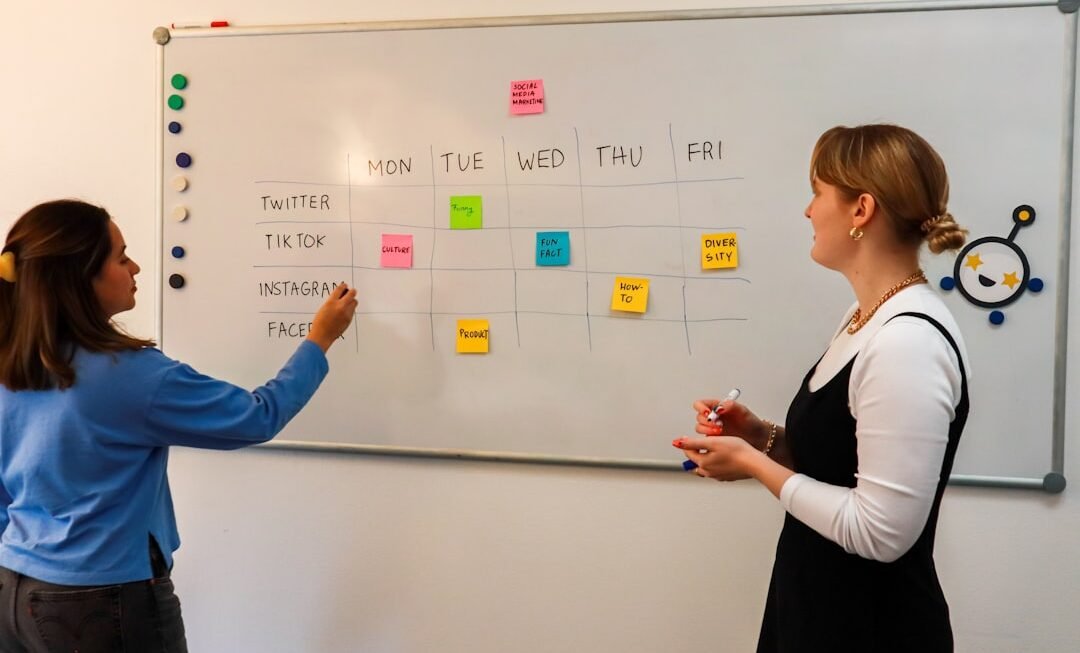The education-to-workforce gap represents a significant challenge in contemporary society, where the skills imparted through traditional educational systems often fail to align with the demands of the labor market. This disconnect can be attributed to various factors, including rapid technological advancements, evolving industry needs, and a curriculum that may not adequately prepare students for real-world applications. For instance, while many educational institutions focus on theoretical knowledge, employers increasingly seek candidates who possess practical skills and competencies that can be immediately applied in the workplace.
This misalignment not only affects the employability of graduates but also hampers economic growth, as businesses struggle to find qualified talent. Moreover, the gap is exacerbated by the diverse nature of industries and the specific skill sets they require. For example, sectors such as technology and healthcare are experiencing unprecedented growth, yet they often report a shortage of skilled workers.
According to a report by the World Economic Forum, over 85 million jobs may be unfilled globally due to a lack of qualified candidates by 2030. This statistic underscores the urgency of addressing the education-to-workforce gap, as it poses a threat not only to individual career prospects but also to broader economic stability. Bridging this gap necessitates a reevaluation of educational practices and a concerted effort to align curricula with the evolving needs of the workforce.
Key Takeaways
- The education-to-workforce gap is a significant challenge that requires innovative solutions.
- AI plays a crucial role in bridging the gap by providing insights into future workforce needs and helping to tailor education and training programs accordingly.
- Personalized learning pathways are essential for ensuring career readiness and preparing individuals for the demands of the future workforce.
- Building skills for the future workforce involves a focus on adaptability, critical thinking, and technological proficiency.
- AI-enabled learning has a significant impact on education and employment by providing personalized, adaptive, and accessible learning experiences.
The Role of AI in Bridging the Gap
Personalized Learning Experiences
AI-driven platforms can analyze student performance data in real-time, identifying areas where learners may struggle and providing tailored resources to address those gaps. This personalized approach not only fosters deeper understanding but also equips students with the specific skills that employers are seeking.
Bridging the Gap between Education and Employment
AI can facilitate connections between educational institutions and industries, ensuring that curricula remain relevant and aligned with market demands. Through predictive analytics, AI can forecast emerging trends in various fields, allowing educators to adjust their programs accordingly.
Preparing Students for Emerging Trends
For example, if data indicates a growing need for data analysts in a particular region, educational institutions can introduce specialized courses or training programs to prepare students for these roles. By integrating AI into the educational framework, stakeholders can create a more dynamic and responsive system that effectively bridges the gap between education and employment.
Personalized Learning Pathways and Career Readiness
Personalized learning pathways represent a paradigm shift in education, moving away from one-size-fits-all approaches toward tailored experiences that cater to individual student strengths and interests. This model is particularly beneficial in preparing students for the workforce, as it allows them to explore various career options while acquiring relevant skills. For instance, students interested in technology can engage in project-based learning that simulates real-world scenarios, such as developing software applications or analyzing data sets.
This hands-on experience not only enhances their technical abilities but also fosters critical thinking and problem-solving skills that are essential in today’s job market. Moreover, personalized learning pathways can incorporate mentorship opportunities and industry partnerships that further enhance career readiness. By connecting students with professionals in their fields of interest, educational institutions can provide invaluable insights into industry expectations and workplace dynamics.
For example, internships or co-op programs facilitated through these partnerships allow students to gain practical experience while still in school. This exposure not only bolsters their resumes but also helps them build professional networks that can be instrumental in securing employment after graduation.
Building Skills for the Future Workforce
As industries continue to evolve due to technological advancements and globalization, the skills required for success in the workforce are also changing. Employers increasingly prioritize soft skills such as communication, teamwork, and adaptability alongside technical competencies. Educational institutions must therefore focus on cultivating a holistic skill set that prepares students for the complexities of modern work environments.
For instance, incorporating collaborative projects into curricula can help students develop teamwork skills while also enhancing their ability to communicate effectively with diverse groups. In addition to soft skills, there is a growing emphasis on digital literacy as a fundamental component of workforce readiness. As automation and AI become more prevalent across various sectors, individuals must possess a strong understanding of digital tools and platforms.
By prioritizing both soft and hard skills development, educational institutions can better prepare graduates for the demands of the future workforce.
The Impact of AI-Enabled Learning on Education and Employment
AI-enabled learning has the potential to revolutionize both education and employment landscapes by creating more efficient and effective learning experiences. For educators, AI tools can streamline administrative tasks such as grading and curriculum development, allowing them to focus more on teaching and student engagement. Additionally, AI can provide insights into student performance trends, enabling educators to make data-driven decisions that enhance instructional strategies.
This shift not only improves educational outcomes but also fosters a more engaging learning environment for students. From an employment perspective, AI-enabled learning pathways can significantly enhance job readiness among graduates. By utilizing AI-driven assessments and simulations, students can gain practical experience in their chosen fields before entering the workforce.
For example, virtual reality (VR) simulations powered by AI can immerse students in realistic work scenarios, allowing them to practice skills in a safe environment. This experiential learning approach not only boosts confidence but also ensures that graduates are better equipped to meet employer expectations upon graduation.
Overcoming Challenges in Implementing AI-Enabled Learning Pathways
Despite the promising potential of AI-enabled learning pathways, several challenges must be addressed to ensure successful implementation. One significant hurdle is the need for adequate infrastructure and resources within educational institutions. Many schools may lack access to advanced technologies or sufficient funding to integrate AI tools into their curricula effectively.
To overcome this barrier, stakeholders must advocate for increased investment in educational technology and provide training for educators on how to leverage these tools effectively. Another challenge lies in ensuring equity in access to AI-enabled learning opportunities. As technology continues to advance rapidly, there is a risk that disparities may widen between institutions with varying levels of resources.
It is crucial to develop strategies that promote inclusivity and ensure that all students have access to high-quality AI-driven educational experiences. This may involve partnerships between public and private sectors or initiatives aimed at providing underserved communities with access to technology and training.
Success Stories: How AI-Enabled Learning Pathways Have Transformed Education and Workforce Development
Numerous success stories illustrate the transformative impact of AI-enabled learning pathways on education and workforce development across various regions. One notable example is Georgia State University’s use of predictive analytics to improve student retention rates. By analyzing data on student performance and engagement, the university identified at-risk students early on and provided targeted support services tailored to their needs.
As a result, Georgia State saw a significant increase in graduation rates, demonstrating how data-driven approaches can enhance educational outcomes. Another compelling case is found in Singapore’s SkillsFuture initiative, which leverages AI technologies to provide personalized learning experiences for its citizens. The program offers a wide range of courses tailored to industry needs while utilizing AI algorithms to recommend learning pathways based on individual interests and career aspirations.
This initiative has not only empowered individuals to upskill but has also contributed to a more agile workforce capable of adapting to changing economic demands.
The Future of AI-Enabled Learning Pathways and Its Potential Impact on the Global Workforce
Looking ahead, the future of AI-enabled learning pathways holds immense promise for reshaping education and workforce dynamics on a global scale. As technology continues to advance at an unprecedented pace, educational institutions will increasingly adopt AI-driven solutions that enhance personalized learning experiences and align curricula with industry needs. This evolution will likely lead to a more skilled workforce capable of navigating complex challenges across various sectors.
Moreover, as AI technologies become more integrated into everyday life, lifelong learning will become essential for individuals seeking to remain competitive in the job market. The ability to continuously adapt and acquire new skills will be paramount as industries evolve and new roles emerge. Educational institutions will play a critical role in fostering this culture of lifelong learning by providing accessible resources and flexible learning pathways that cater to diverse learner needs.
In conclusion, the integration of AI into education presents an opportunity not only to bridge the education-to-workforce gap but also to redefine how individuals prepare for their careers in an ever-changing world. By embracing innovative approaches that prioritize personalized learning and skill development, stakeholders can create a more resilient workforce equipped to thrive in the future economy.












